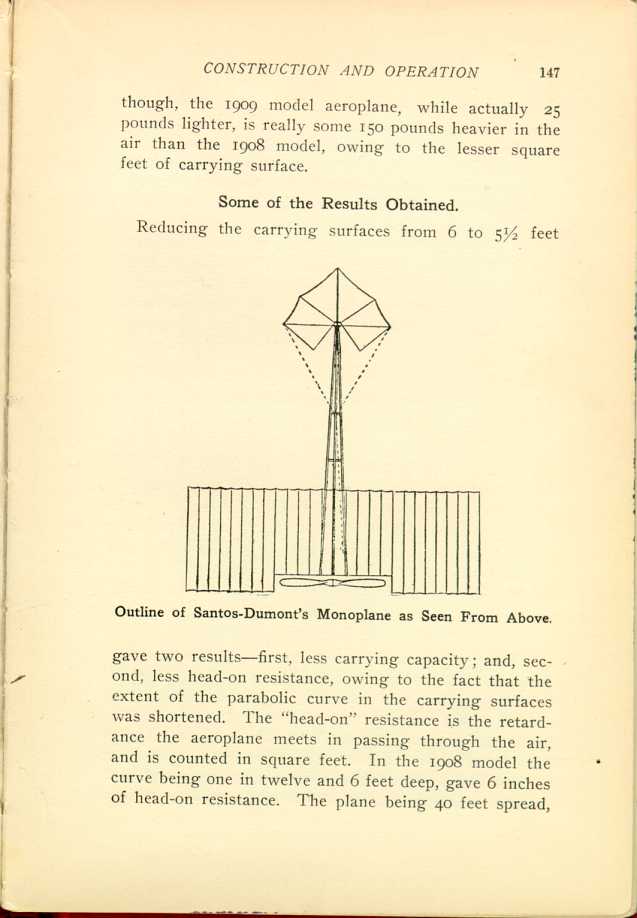Some of the Results Obtained.
Reducing the carrying surfaces from 6 to 5 1/2 feet

Outline of Santos-Dumont's Monoplane as Seen From Above
[Description: Black and white illustration: monoplane from above.]
In the 1909 aeroplane, shortening the curve 6 inches at the parabolic end of the curve took off 1 inch of head-on resistance. Shortening the spread of the planes took off between 3 and 4 square feet of head-on resistance. Add to this the total of 7 square feet, less curve surface and about 1 square foot, less wire and woodwork resistance, and we have a grand total of, approximately, 12 square feet of less "head-on" resistance over the 1908 model.